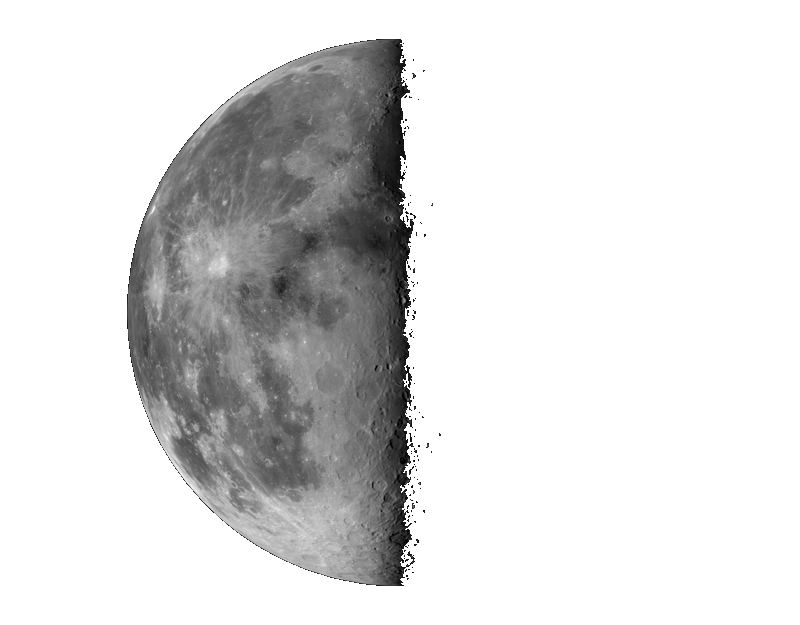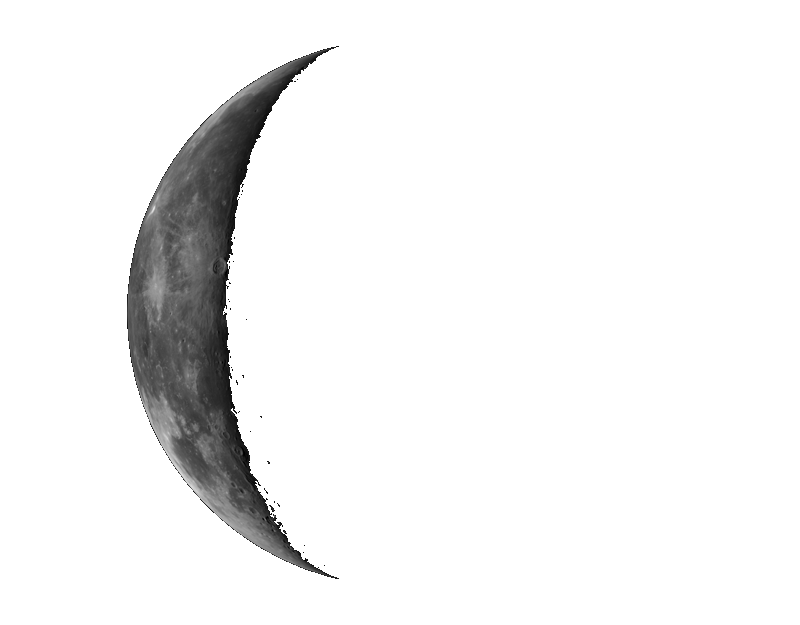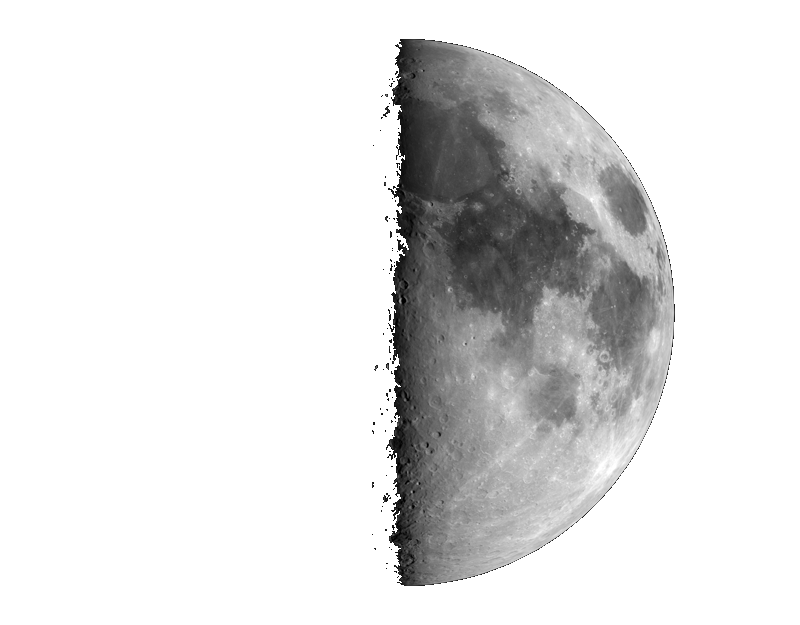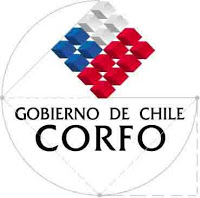Contact Us
- Address: Réservations par internet seulement
- Email: infoSPAMFILTER@spaceobs.com
- Phone: No telephone
- Cellphone: No telephone
- Website: www.spaceobs.com
Next moons
14-09-2025  | 21-09-2025  |
29-09-2025  | 07-10-2025  |
Sponsors


We normally work 3 weeks straight, and then for the full moon, take one week off. This full moon (May 2016), we went to New York to see my daughter, and buy things we cannot find in Chile. We stayed at the Bryant Park Hotel, a quite central place in Manhattan. La maison Kayser, just a few tens of meters from the hotel has some very good pastry :). I went at Barnes and Nobles, buy astronomy magazines, which I don’t receive in Chile. Looked at the astronomy books, I always buy a few books, and some CDs. Found the book by Mike Brown about how he, alone :), “killed” Pluto. I knew about this book when it was published, but never ordered it, saw it on the shelf, bought it. The idea was to read it in the airplane, but I started early, and when I start a book, I like to finish it before doing something else. So just finished, reading from the morning to the end of the afternoon. The weather was not that good in New York anyway, and I walked already quite a lot in the past days, it was a good opportunity to rest a little bit. Here are my comments about the book after reading it. If you are interested about this book, here it is. I would recommend you read it first, before reading my comments.
To start with, there are a few mistakes or errors in the book. Pluto does not rotate around the sun in 255 years but in 248. You have to have pretty big binoculars to see the rings of Saturn or the bands on the surface of Jupiter with them (both require about 30 times of magnification, and a “powerful” binocular would give about half of what’s needed). So don’t really know of Mike Brown ever observed through binoculars or is inventing… But these are details. Also, I am a member of the IAU and never had to fill a form asking me all kind of weird details about myself. Normally I believe it is your national committee who proposes you for membership, and it is normally accepted at the following General Assembly.
The story of Pluto/planet/ asteroid is a story which I have followed since the beginning, and even before the beginning of what is related in the book. I have evidently a different vision from the author’s. On some points I learned things reading his book, on some other I know other parts of the story he apparently does not know.
My first night at Palomar’s 48inch was in 1984 with Charles Kowal, while he was taking plates for the Quick Blue Survey which was used to produce the Hubble Space Telescope “Guide Star Catalog”, it was nice reading about Palomar, and I share the author’s point of view that Palomar Observatory is a magical place. I lived on the mountain with my family during 4 years in 2 different cottages, and am the person who designed (among a few other things there) the darkroom used for the second Palomar Survey, now indeed a storage area :). Jean Mueller was hired a few months after me, and I was the one who told her about how to find asteroids and supernovae, she became much better than me in these fields :). I have not seen her in years, and just know she has retired from the observatory.
Palomar is where my daughter was born (and conceived :) ). And while having children is a wonderful experience, lots of work, little sleep, I wonder if the average reader wanting to know how Pluto was “killed” really cares about a good part of the book describing the author’s personal life and fatherly experience. Concerning Palomar, I left much more interested in asteroids than in photography. I discovered 2 comets while at Palomar and a few Near Earth Asteroids and supernovae. I spent several nights looking at Jim Gibson’s observations of asteroids with CCDs, it was a pioneering time. I exchanged a lot with both the Shoemakers, and with Glo Helin.
I read the beginning of the book asking myself why the author didn’t talk about Charles Kowal (who tried to probe the far reaches of the solar system, discovered a new satellite of Jupiter (Leda), and the first centaur asteroid (Chiron) which in their time made the news. He is cited later on. Kowal was basically thrown away from Caltech, mostly because he was not a real (i.e. PhD) astronomer. He is one of the 4 persons in the world to have discovered more than 100 supernovae in the pre-CCD epoch (Fritz Zwicky was the first, then Charles Kowal, then Christian Pollas, then Jean Mueller, Zwicky was the only PhD astronomer of the four). After Caltech, he worked at the Space Telescope Institute, then retired in Oregon where he died in 2011. He liked computers, and created robots in his home in his later years. If you talk about history, it's good to start from the beginning, not omitting important persons.
I also wondered why Glo Helin, who was I believe instrumental behind the NEAT project who built the first CCD camera on the 48inch Schmidt, not cited in this book. David Rabinowitz is cited but only after the first third of the book. David had worked before at Spacewatch, then has worked at Yale, where he was instrumental in the QUEST project, which installed the camera first on a Schmidt telescope in Venezuela, then at Palomar. He worked (I am pretty sure, but not 100% positive) also to develop the NEAT project, which used 3 4096x4096 CCD at the focus of the Schmidt telescope at Palomar (it was the first CCD camera installed in that telescope). Brown’s book gives the impression that cameras did just appear at Palomar like if it was a simple thing to put a CCD camera in such a telescope and not a big project requiring years of work by several competent persons (whom you could thank for giving you the opportunity to use them later on on you own projects). Even having the high speed internet link between the dome and campus was not a trivial thing. The Caltech/Palomar administration has to be commented for having kept the 48 inch Schmidt telescope operational. Most of the other Schmidt telescopes in other observatories have just been mothballed. Today projects like the ZTF will make this telescope productive for several more years.
Then there is the Haumea episode. The MPML (Minor Planet Mailing List) is just called “an internet chat”. It can be called like that if you want, but it’s not really “an internet chat”, it’s the place where most active asteroid discoverers, amateurs and pros alike are interchanging information. I left that mailing list about a year ago, for the same reason I left professional astronomy 13 years ago. Seeing Sheldon Cooper is somehow fun on TV but dealing with similar nerds on a daily basis is tiring, and my life is too precious to waste it on and with idiots like that (educated idiots, but real idiots anyway). Many members are nice persons (and they are my friends on facebook :) ), but I got tired to talk to idiots of the impact clan (see this book). Then on that list, you have hundreds more other people, some journalists and some other poor souls who believe that when Nibiru will hit the earth, the information will first come there :). They are normally just listening. While professionals in this field are usually hired to perform a job, they are usually also caught in the game, and amateurs (i.e. not paid to spend nights observing or writing software ) are quite often people who enjoy a better financial situation than the typical professional astronomer, maybe much more advanced in computer science than the average professional, and are mostly doing this for the thrill and the fun of discovery. One of the important point for the average amateur is also the fact of being able to name their discovery, in honor of their loved ones, the person they want to honor the most, etc… At least it was the case before the MPC (Minor Planet Center, which is were the observers around the world send their observations) changed the naming rules of asteroids. Now it has become almost impossible for an amateur, even spending hundred of thousands of dollars in his instrumentation, to compete with NASA financed programs like Catalina or Panstarrs. But in the early 2000s, many amateurs were active discoverers and were naming their asteroids. This context has apparently never been understood by Mike Brown nor did he understand the consequence of his non educated behaviour in the whole business. There is one page (I should have bought the book in Kindle format to be able to find the exact page where Mike Brown describes how asteroids are named) where he tells us that there are rules. I didn't expect this one :). The only problem is that Dr Brown never read them, or if he read them, decided to piss on them repetitively. Indeed, any amateur knowing vaguely how to read can find the last articles on : http://www.minorplanetcenter.net/iau/info/Astrometry.html The general idea is that the person who is recognized as the discoverer as the privilege to submit a name to the committee, after it has been numbered by the MPC.
These rules have been written by the MPC and the CSBN (Committee on Small Bodies Nomenclature), and applied “with freedom” by the then director of the MPC, Brian Marsden. Two examples which come to my mind are citations proposed for Bill Gates and Warren Buffet and which were rejected by the CSBN. I assume that since Bill Gates is the person behind Windows and most astronomers adore Linux (and before that Unix and VMS) persons, Bill Gates was really not an “suitable” asteroid name. In fact it’s likely that many professional astronomers were programmed in linux. Microsoft clearly smells sulfur in the computer geek’s world. Warren Buffet was proposed by an amateur astronomer (Bill Yeung) who was interested in finance (and in fact used his personal “finance” to purchase several expensive telescopes which allowed him to discover his asteroids and comets), but for obscure reasons (at least I find them weak to say the least) he was never able to name an asteroid for the person he admired the most. One can argue about admiring a person whose main quality is to be one of the richest persons on earth, but there is no written rule by the CSBN saying they reject any asteroid name given to a person who is a billionaire. Both in fact are now giving a lot of their money to important causes, and only for that should get an asteroid named after them. The only clear rules are that militaries, politicians cannot have asteroid named after them, but rejecting a citation because the person was maybe deemed “too rich” was felt as “arbitrary” to say the least by many asteroid discoverers. Most of the times, your citation gets accepted, but sometimes not, on criteria which are never very clear, and normally never explained. The CSBN is mostly an obscure group of professionals, apparently very busy with other tasks, and there is very little interaction between the committee and the discoverers. For example, I got asteroid 8080 Intel named (the 8080 microprocessor from Intel was the father of all the 8086, 80286, 386 then 486 microprocessors), but I got asteroid Lego rejected. On the pretext that Lego is a commercial brand. But Intel, also a commercial brand, was accepted no problems. Sometimes it’s hard to understand. Then arrives Brown, who just ignores the rules, and work by press conferences, with names he had chosen for his discoveries, who would have never gone through the naming process if the correct procedure for asteroids had just been followed. Orbital arc too short and were not submitted to the CSBN. Everybody was surprised when Quaoar (which nobody today would refer to as a “planetary sized object”) was announced, and even more when the MPC/CSBN endorsed the citation. A law for the poor and no law for the riches… :(. Apparently the MPC never told Brown to refrain from doing it again, and… he did it again for Sedna, even though Reiner Stoss, a german amateur astronomer, already pissed off by the CSBN, but described by Brown as an “agitated” person :) tried to beat the CSBN at its own rules by proposing to name Sedna one of his asteroids (before Brown sent his citation and observations to the MPC). Again the CSBN/MPC/Marsen stepped on their own rules and followed Brown’s unilaterally chosen ones. So, the truth is (I believe) that Reiner was not so upset by Brown than by the MPC and Marsden, who sometimes rejected asteroid names which should have been accepted, and then accepted others which should not have been. When weird things occurs like this, always ask yourself who wins what. Who benefits from the crime. At the time the MPC was financed only by subscription and NASA was receiving more and more money to search for “dangerous” asteroids. In an era of ever increasing discoveries, many people wanted to break the MPC’s monopoly/control over the asteroid discoveries. At that time the MPC was relatively fragile. Today, the MPC is financed by the Jet Propulsion Laboratory, and JPL is a division of… Caltech. And maybe one can only imagine that it would have been a poor idea, in this context, to tell Caltech's Mike Brown that there were rules, and that one, as an educated person, was supposed to follow them... Rejecting the name after the fact would have made quite of fuss. But it should have been made, if only to give the idea that every astronomer is treated in the same way. Instead the MPC bent over and accepted everything coming from Brown’s Caltech group. The last time I met with Brian Marsden he justified his actions on this matter by saying that they were exceptional discoveries and that therefore there were exceptional rules. He alone decided that. I guess too many years doing a given job let you believe you have absolute power. There never was such a written rule in the ones governing the naming of celestial objects in the solar system.
After Sedna, we had Haumea. Whether or not something “fishy” was done on Haumea, nobody will ever know, but even if Haumea was discovered by the Spanish/German astronomers only after reading the DPS announcement, and then by simply looking on the web were able to identify images of Haumea in their archives, according to the MPC rules, they are the discoverers of Haumea, since they were the first to report their observations to the MPC. Mike Brown does not of course mention that the titles of the DPS communications (DPS = Division of Planetary Sciences of the American Astronomical Society, which has a yearly meeting where mostly american planetary scientist meet) about Haumea were mentioning the brightest TNO ever, with extraordinary lightcurve, etc... The abstracts also contained the internal code which was easy to google. The Spaniards were accused of “hacking” the SMART computer, when they just googled and got all the information they maybe needed without any hacking. They could have of course just discovered the object, then seen the DPS title, and checked to see if it was the same object they were after. I would have done the same in the same circumstances. What is not known apparently by Mike Brown is that while he was enjoying a new born in his family, Jose Luis Ortiz was loosing his wife to cancer at exactly the same moment. Why did Jose Luis not answer emails at the time… Maybe because he had other things to worry about and was not really into astronomy at that precise moment in time. One of the main problem of acting like an ass is that you are never sure of when you really are.
One of the important point in this discussion is of course whether one should report a discovery immediately, or keep it secret till more data is available, taking the risk to loose the discovery if somebody is reporting it before you. Which is what happened with Haumea. I have always thought that data retention was non scientific. As soon as some correct data is obtained (and the astrometry obtained from a CCD frame is), it ought to be published. All the people working in the field of small bodies of the solar system work the same way, they find something, report it to the MPC (with a local code, not by organizing a press conference where the name of the object is chosen by the discoverer is announced) and then other observers do follow it up, using very different technologies, to produce astrometry, but also photometry, eventually using space telescopes, sub millimeter telescopes, etc… It turns out that many of the follow ups obtained by Mike Brown on his discoveries were corrected later by other astronomers. It takes experience to get correct measurement of specialized instruments. This is the idea behind releasing information as soon as possible , let the other experts do their work correctly. You are still the discoverer, but at least correct information is obtained faster.
A case which I know very well is the diameter of Eris. Using the Hubble telescope, Mike Brown and his colleagues had estimated its diameter to be between 2400 to 3000km. We determined (there were two chords obtained during the first occultation and my observation produced the longest one of the two) that it was barely smaller than Pluto. Indeed the diameter of Pluto is hard to determine, because the correct value depends of the model of atmosphere chosen. Layered, not layered, etc...
Then we have all the discussion which followed, in which Brown didn’t take any part, about Pluto as a planet or not. I basically agree with his analysis. I see Pluto as one of the largest asteroids on the transneptunian belt, clearly not a planet. It makes sense that in order to be able to define a category , one need to have measurable parameters on which to define the category, and clearly the size is not one of them. Proof is that of Pluto, one of the largest asteroids in the Kuiper belt, observed since 1930 was only measured correctly in 2015 (a paper by Alex Dias Oliveira was published in the November issue of the Astrophysical Journal and our value, I am one of the coauthor :), gives a quite similar value to the one obtained a while later by the New Horizon mission). The only parameter easily accessible are the orbital elements, and that lets you separate between the big guys, the 8 planets, and the small stuff orbiting in an asteroid belt, and whose orbit is governed by the big guys. Now that very big asteroids have different physical properties than the smallest ones is the same thing as big planetary satellites having different physical properties than the smallest ones. They are a big bunch of objects for which we cannot measure the physical parameters except in very specific cases (specific space mission and stellar occultations , which are very rare). The definition of planet, dwarf planet and asteroids given in Prague is a testimony that these guys were tired and in a hurry, and trying to please everybody. We could have imagined a solar system with giant planets and planets, and asteroids and a few giant asteroids (instead of dwarf planets which are not planets).
Brown does not talk about the episode where Marsden tried to get Pluto numbered as asteroid 10000, and all the fuss which followed. Fuss, I might say mostly Americano American. The rest of the world does not have any nationalistic relation with Pluto. An important aspect of Pluto is that it is in a way an adaptation of the cynical story sold to American as “the American dream” to astronomy, the basic idea is that any idiot working like crazy will have a chance to become very rich. Like if in any other “free” country, any idiot working like crazy and being a little bit lucky cannot get any success ;). Anyway, the story of Pluto and his discoverer is the story of the American dream applied to astronomy. You take an amateur astronomer, working on a farm, and because he discovered Pluto, becomes one of the most famous American astronomer in the 20th century. 1930 is a year after the 1929 economical crisis, and at the time, there were not too many pleasing stories to read in the American press. The discovery of Pluto was taken and is still taken a subject of pride by Americans. Touching the status of Pluto is of course touching the pride of America.
Brown describes the episode of the IAU committee which had for mission to save private Pluto. Committee which tried all kind of weird things to keep Pluto as a planet. Richard Binzel, a “proplutonian” was the only one really knowledgeable about asteroids in this committee. No wonder their recommendations were rejected by the people working on asteroids (commission 20). I agree with Mike Brown that the term “dwarf planet” is a really stupid term to use but I believe caused by the need not to upset American astronomers, since Pluto after all was the only “american” planet. There again, one third of the IAU’s funds comes from the United States, and it was important not to frustrate the American astronomers. So Pluto is not a planet, but still “planety” :). A few stupid American astronomers tried to enter in “rebellion” against the IAU. Alan Stern and a group of astronomers, but in their vast majority Americans, tried to make a petition against the IAU decision, and then, adding injury to insult, tried to do a few other stupid things against the IAU, such as mounting an organization devoted to naming celestial objects, similar to the “name a star” scams. This is (because it still does exist) pitiful. https://en.wikipedia.org/wiki/Uwingu
Then there are a few individuals, who apparently have little more to do of their lives than to “fight for Pluto”. At one moment, I felt like Mike Brown met Laurel Kornfeld, a plutomaniac, who apparently after so many years still has to get a life… :(
Now, did Mike Brown kill Pluto ?. There I really don’t agree with him. First Pluto was never killed, it was just renamed and placed in the correct category. Nor was it “demoted”, or other type of “degradation”, because there is no such thing as high quality planets and lower quality asteroids. In nature there are eleph-ants and ants, and when you goof to the point of naming an ant an eleph-ant, it’s a rather good thing when you start to realize your error and call it an ant. The whole story was depicted by people who didn’t know much about the solar system, and were reacting affectively to something where affection has little to do. The good thing is that nobody died. In 1600, when it became obvious that the earth was not the center of the universe but rather the third planet of the solar system, some people died. Today nobody still believes the earth is flat. Except the members of the flat earth society (www.flatearthsociety.com) which is a big society, since it has members in every country of the globe. By the way I checked, just to make sure. If you compare the mass of Jupiter to the mass of Pluto, you get the same ratio of mass as between an asian elephant and... 18 ants. I was a little optimistic. Pluto is really a small object.
Then who brought the current realization that Pluto was not a planet ?. The correct answer is that not a single person did it. I would cite all the people who first imagined the Kuiper belt. Gerard Kuiper and the few people who imagined that there could be such a thing as the Kuiper belt. Kenneth Edgeworth, who predicted the existence of such an asteroid belt ten years before Gerard Kuiper? Or Julio Fernandez, who published a paper in 1980 about the existence of such a belt (http://articles.adsabs.harvard.edu/cgi-bin/nph-iarticle_query?1980MNRAS.192..481F&data_type=PDF_HIGH&whole_paper=YES&type=PRINTER&filetype=.pdf ).
Then there are the people who discovered the objects of the Kuiper belt, starting with David Jewitt (Jane Luu is cited in the book, but not David.. ?). Marc Buie for example, who discovered a very large number of transneptunian asteroids is not even cited once in Mike Brown’s book. I compiled recently a list of all TNO and centaur asteroids, and found the word “Buie” 505 times, whereas there were only 33 times the word “Brown”…
Then, did Mike Brown really want to “kill” Pluto. No, he was in fact quite sad after the IAU meeting, and wrote a “requiem for a planet”. http://web.gps.caltech.edu/~mbrown/whatsaplanet/requiem.html The people who really “killed” Pluto were the planetary astronomers who fought against the IAU committee recommendation and the other astronomers present in Prague who voted in favor of the logical choice. I would mainly cite Julio Fernandez from Uruguay who was the main author of the alternative proposal which finally went mostly through… (https://en.wikipedia.org/wiki/Julio_%C3%81ngel_Fern%C3%A1ndez ), in the group were several other members of commission 20, such as Andrea Milani. For me, if there was only one Pluto killer, it would clearly be Julio Fernandez. But as Mike Brown basically said about Jose Luis Ortiz, he has never discovered anything, is not from Caltech, so does not exist :).
On average, I share Mike Brown's point of view about the whole situation, I am just not comfortable with the way it was done.
Now, last questions, does Mike Brown suffer from planetomania ? I would guess that yes. Today nobody would call Sedna or Quaoar a “planet”, but they were each time announced as if they were "planetary sized objects" in our solar system. The last example of this planetomania is the story of the 9th planet (I assume most of you have read about it, if not just google planet nine). Back to 1841. Or a bit earlier. Herrschel discovers Uranus, first believing it’s a comet, then after the orbit is sufficiently well known, astronomers realize it has a small eccentricity, is big, and therefore _is_ a new planet. Computing the orbit at that time, it turns out that Uranus seems to “accelerate” with time compared to “how it should rotate”. Then it starts behaving better. Then it slows down. So Le Verrier at the Paris Observatory tries his luck at computing where a planet, further away than Uranus should be in the sky to cause this acceleration, then this slowing down of Uranus. Turns out he makes a correct calculation, and Galle at Berlin observatory discovers Neptune very close to where Le Verrier had predicted. Did Le Verrier claim he had discovered a new planet before it was discovered ? No, he didn’t. Did he after Galle observed it. Yes. Do we all, almost 200 years later still consider him the discoverer, yes we do. And there is no doubt in nobody’s mind that Neptune is a planet. Had Neptune not existed, he would not have looked like bad after making a worldwide publicity stunt, because it would have been just between him and the few astronomers who observed that sector of the sky trying to see if there was a planet or not.
Is Brown’s planetomania a bad thing ?. No. Mostly no. For me it’s a pain because these days I waste a lot of time explaining to the public coming to my observatory that no new planet was yet discovered, and that it might even not exist at all. I also still explain very often why Pluto is not called a planet anymore. But it’s not a pain because it’s good to have people who are energetic and want to move things. All the discoveries of these big asteroids has been a good thing for astronomy, it could have been done in a more “gentleman” fashion, but it was done and it’s the important thing.
Being a rigorist atheist, I am nevertheless from Christian culture, so let’s finish by a Christian citation : “What makes noise is not good, what is good makes no noise”.
PS : The fun part is that if you look for that citation, you will find it from Saint Vincent de Paul, or from Saint François de Sales I have seen it also attributed also to Saint Jean Baptiste de Lasalle. Anyway, clearly somebody who didn’t want to make too much noise.
14-09-2025  | 21-09-2025  |
29-09-2025  | 07-10-2025  |

